Florida’s wetlands are having a tense moment, the kind that makes biologists speak quietly and glance at the sky. From the sawgrass prairies of the Everglades to the mangrove-fringed flats of the Keys, rare animals are blinking red on scientists’ dashboards. Some species show flashes of recovery; others are slipping faster than expected. The drama is playing out in real time – traffic-snarled highways, spinning fish, flooded nests – against a backdrop of restoration projects decades in the making. Here’s where the story stands, what’s at stake, and how the next few seasons could tilt the arc toward survival.
The Hidden Clues
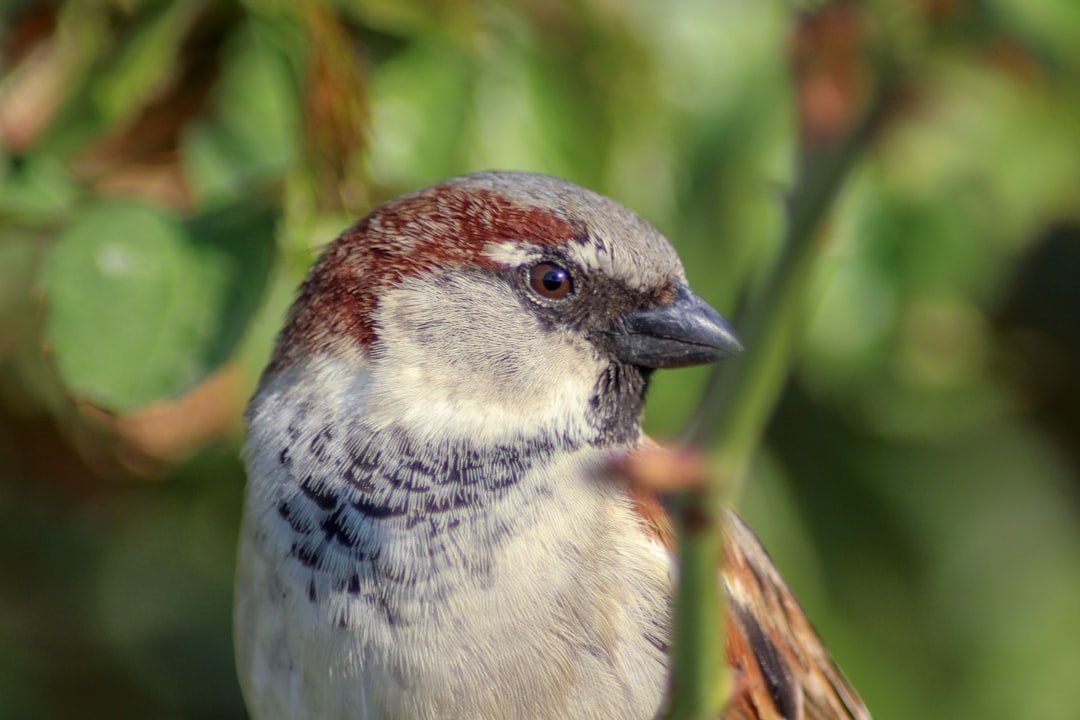
What do a whirling fish, a ground‑nesting sparrow, and a phantom cat have in common? They’re all broadcasting distress signals across Florida’s wetlands, and the messages are surprisingly specific. In the Florida Keys, endangered smalltooth sawfish have been observed spinning, beaching, and dying in unusual numbers, a mystery that launched an unprecedented rescue effort. On the prairies, the Cape Sable seaside sparrow can’t finish nesting when water lingers too long. And on the roads that thread the swamps, Florida panthers are being lost to vehicle strikes at a pace that conservationists say is unsustainable. Each clue points to the same culprit: water in the wrong place, at the wrong time, amplified by human pressure.
Florida Panther: The Everglades’ Ghost Under Pressure

The Florida panther is still the rarest large cat in the eastern United States, with only roughly between one and two hundred adults left in the wild. Despite decades of recovery work, last year ended with several dozen deaths – most from collisions – and 2025 began with new roadkill losses, a grim reminder that traffic is the panther’s most relentless threat. Biologists emphasize how narrow the margin is: a handful of extra road deaths in a single year can erase progress gained through habitat protection and genetic management. The physics are brutal – fast cars, fragmenting suburbs, and a cat that needs huge home ranges. There is progress, including land acquisitions north of traditional range to open a path for dispersal, but the daily calculus on State Road 29 and I‑75 still too often ends badly. If Florida can’t keep panthers off hoods and bumpers, nothing else will matter. ([apnews.com](https://apnews.com/article/86e5dacd7db4cac67c663955bcbe1f88?utm_source=openai))
Smalltooth Sawfish: A Spinning Emergency at the Mangrove Edge
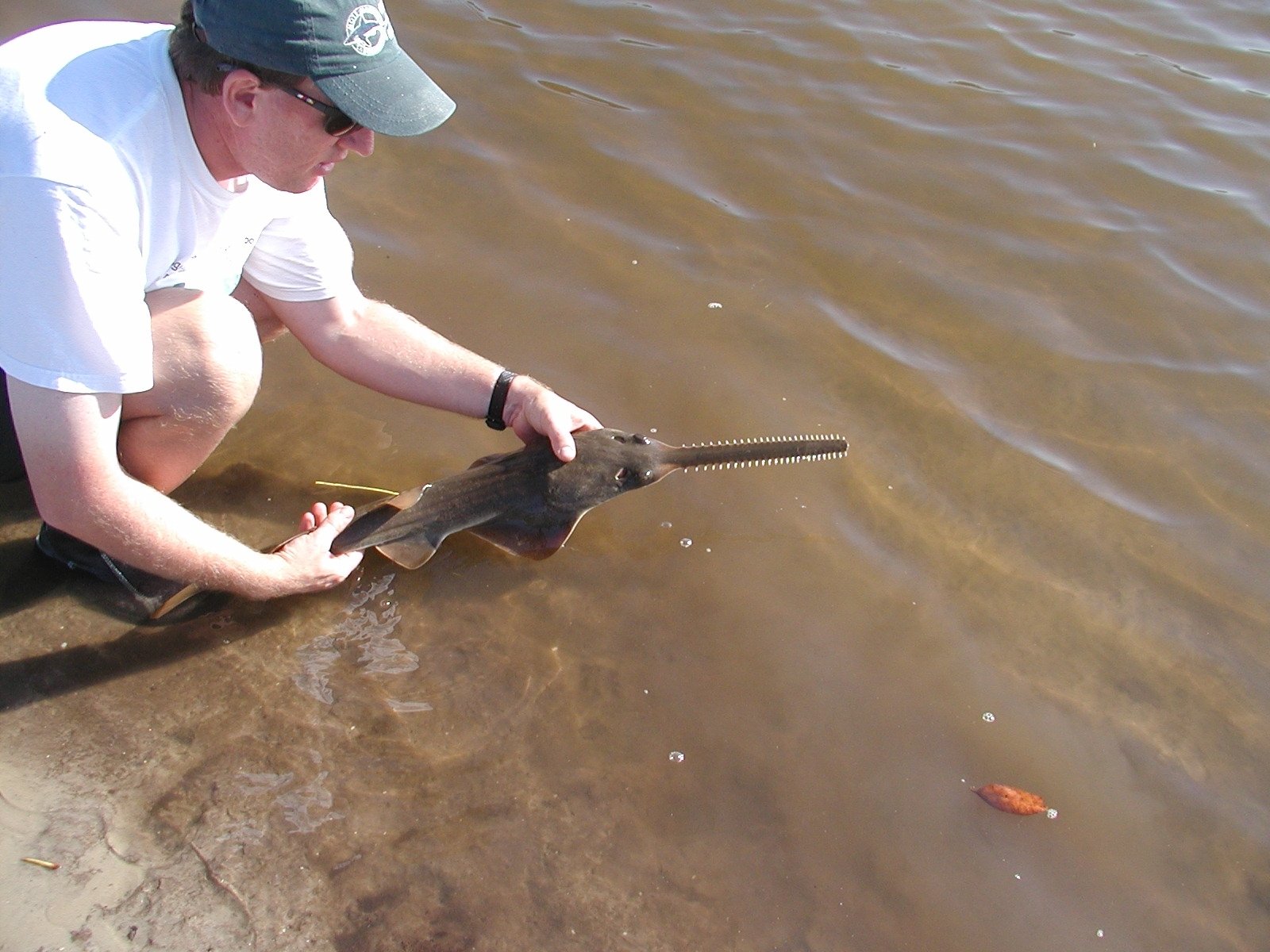
Florida’s most prehistoric‑looking fish is in a modern crisis. Since late 2023, agencies have documented waves of sawfish in distress – spinning in tight circles, beaching themselves, and dying – especially in the Keys, with over 130 sawfish documented showing signs of distress since the episode began. Scientists mobilized an emergency response and even attempted the first rehabilitations for this species; one rescued animal survived weeks in care before succumbing, but the effort yielded valuable insights and a playbook for future saves. Investigators have yet to pin down a single cause, though harmful algal toxins and heat‑stressed conditions remain suspects, and responses now include rapid triage and tagging to track survivors. It’s a sobering pivot for a species that had been clawing back thanks to protections and mangrove nursery safeguards. The saws are telling us something is off in the estuaries where freshwater meets the sea.
Everglade Snail Kite: A Raptor Living or Dying by Water Levels
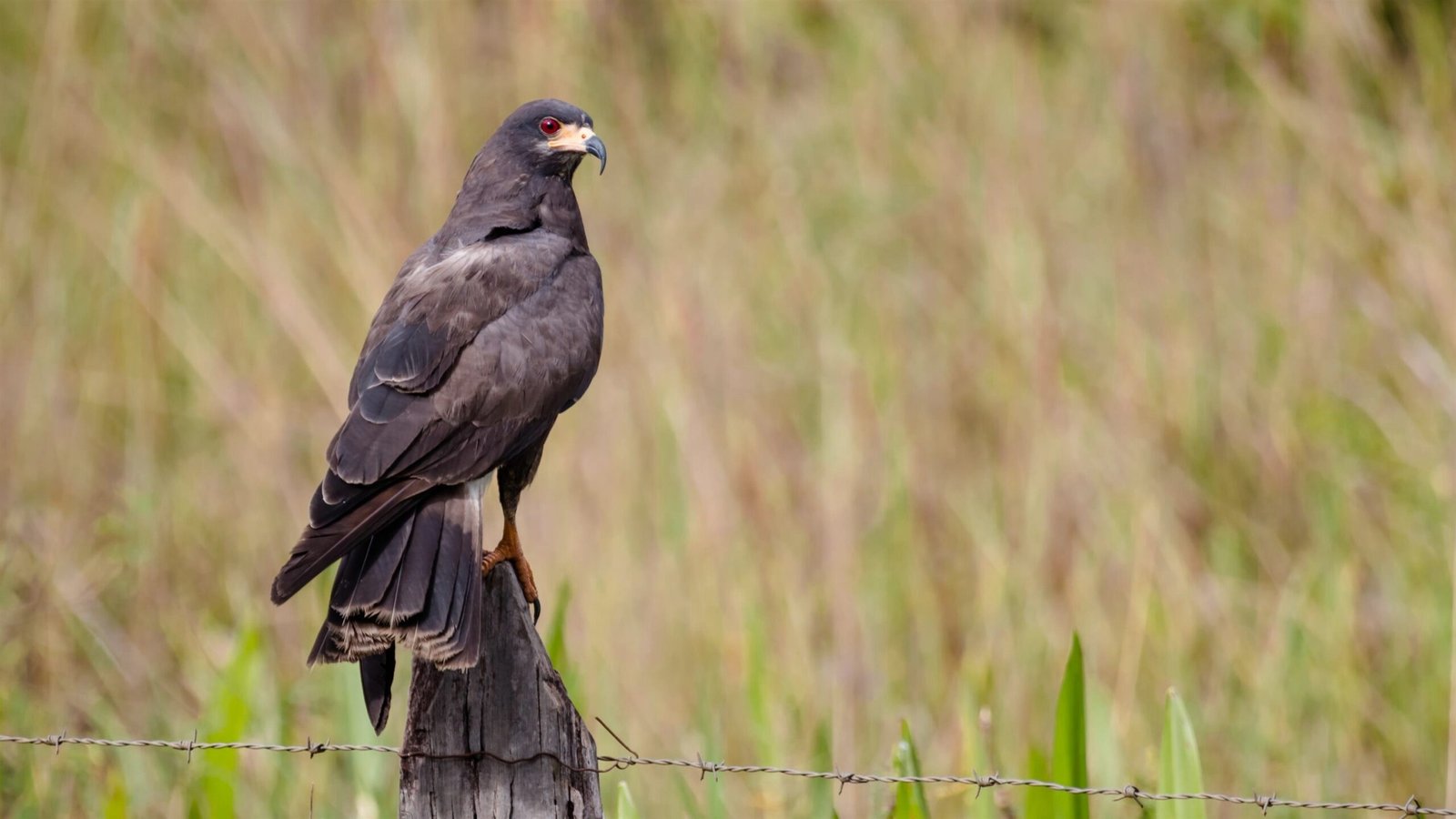
This hawk with a curved, delicate bill is the Everglades’ hydrology made flesh. It hunts almost nothing but apple snails, and its nests succeed only when marsh water levels hit a not‑too‑high, not‑too‑low sweet spot. Years of droughts, sudden deluges, and the domino effects of water management have whipsawed the population, which remains federally endangered. An invasive, larger apple snail complicated the story: kites learned to handle the jumbo prey in some areas, but that adaptation doesn’t cancel the need for stable nesting water. The safest path forward is still boring, technical water work – timed releases, levee operations, and restoration projects that bring the historic sheet flow back. When the water is right, this bird shows us how fast life can return. When it’s wrong, nests fail in a week.
Cape Sable Seaside Sparrow: The “Goldilocks” Bird of the Marl Prairies

Endangered since 1967, this tiny, earth‑toned songbird nests just inches above the ground and needs a precise dry window between late winter and summer. Too much water and the nests flood; too little fire and shrubs invade its open prairies; too much fire at the wrong time and entire cohorts vanish. Modeling shows a long downward slide since the early 1980s, with climate‑driven sea‑level rise tightening the vise on the coastal subpopulations. Managers are now testing new tools – refined flow operations under the Tamiami Trail, targeted habitat work, and even conservation breeding funds to hedge against bad years. The bird’s nickname isn’t cute happenstance; its survival really does depend on just‑right conditions. Get the hydroperiod wrong again, and another breeding season blinks out.
Why It Matters
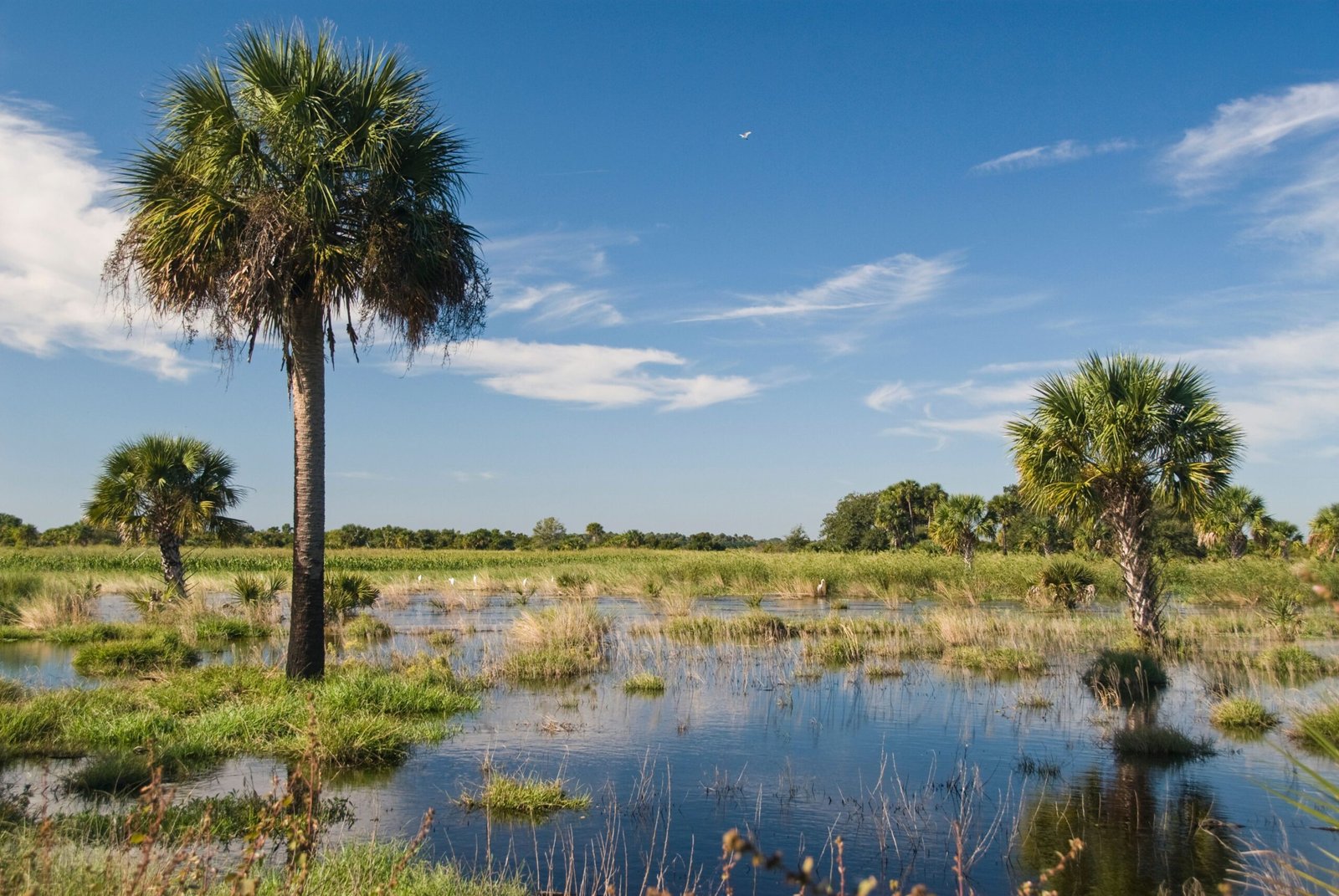
Florida’s wetlands are not just postcard scenes; they are life‑support machines and early‑warning systems. When a sparrow fails to fledge or a sawfish begins to spin, it’s the ecological equivalent of a dashboard’s oil light flickering – ignore it and the engine seizes. The region is also a climate frontline: the South Atlantic coast has seen sea levels jump dramatically in recent years, compressing salt marsh habitat and pushing species into smaller, riskier spaces. Manatees’ mass starvation event tied to seagrass collapse showed how quickly a food web can unravel, even as officials closed the emergency designation at the end of 2023 after two calmer years. And in the Panhandle, specialist amphibians like flatwoods salamanders underline how fragile seasonal wetlands have become without the right fire and rainfall rhythms. Protect the watery matrix, and you protect entire communities – panthers, people, and everything between.
The Future Landscape
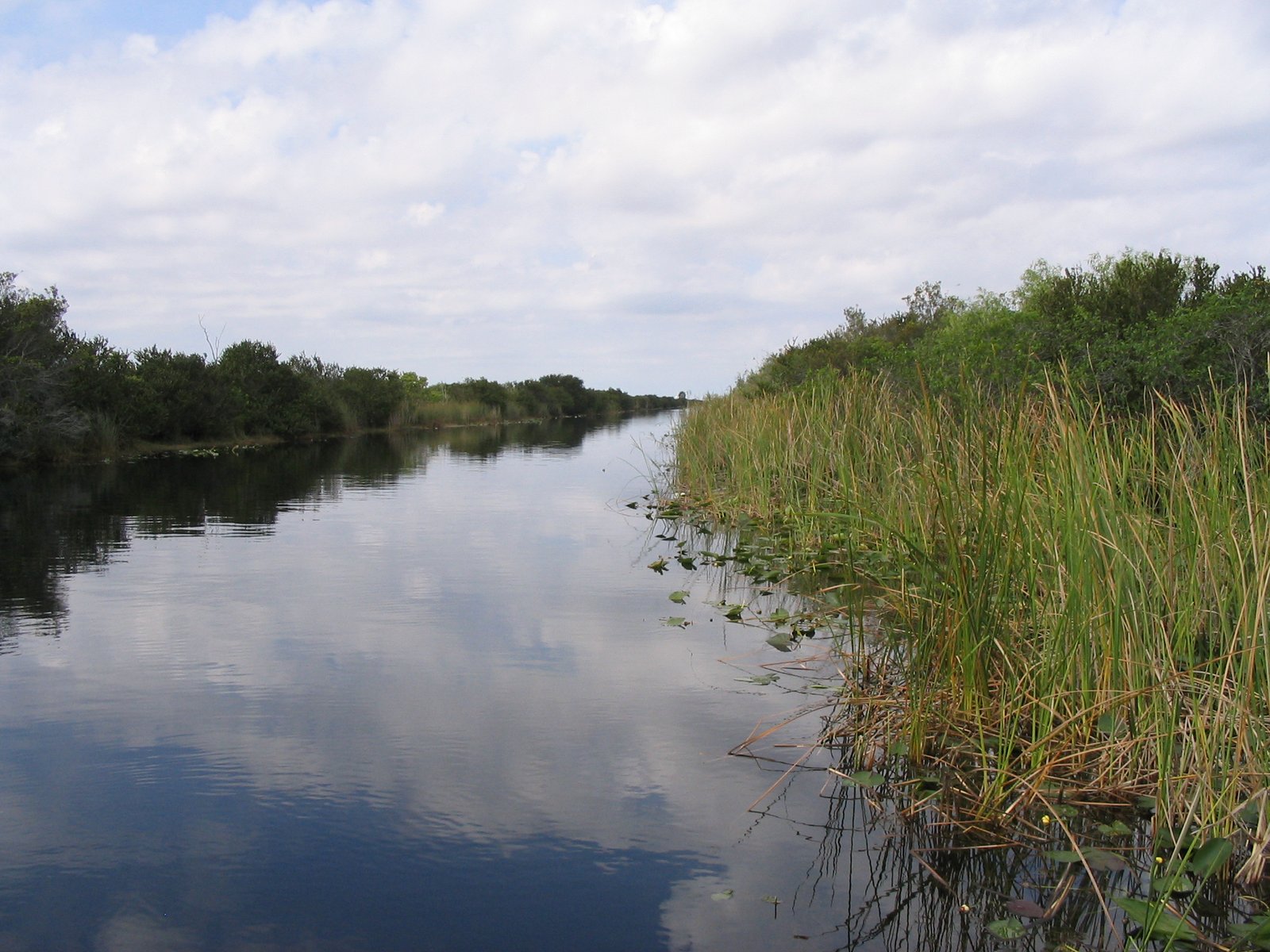
The next decade will be decided by hydrology and diligence. Everglades restoration milestones – like moving more water south under the Tamiami Trail and reconnecting sheet flow – are designed to lower damaging highs and raise damaging lows, stabilizing nesting windows for kites and sparrows while improving salinity balance for estuaries. Freshwater delivery also buffers coasts that are losing ground to higher seas, buying time for habitat transitions where they’re still possible. Offshore and along the coasts, agencies are refining emergency protocols for unusual mortality events so that sawfish rescues move faster and generate stronger diagnostics. And statewide, manatee policy is being updated through a proposed rule to recognize the Florida subspecies separately under the Endangered Species Act, aligning long‑term protections with the species’ particular vulnerabilities, even as officials closed the recent starvation‑driven emergency. Success will look less like a single headline and more like a long string of quieter wins: a slower flood pulse, a safer culvert, a nest that stays dry.
How to Help

Big problems bend when enough small actions line up. Drive slower in signed panther zones and report injured wildlife; one cautious commute can spare a cat. Support water‑quality fixes – septic‑to‑sewer conversions, stormwater upgrades, fertilizer limits – because seagrass and marsh health begin at the neighborhood drain. Back Everglades restoration and land‑protection initiatives that keep water on the landscape and habitats linked. If you fish or paddle, learn how to avoid and report distressed sawfish, and give all roped‑off nesting areas a wide berth. And when you vote, ask how projects will move clean water to the right places at the right times; in Florida, that’s the lever that lifts almost everything living in, on, and around the wetlands.

Suhail Ahmed is a passionate digital professional and nature enthusiast with over 8 years of experience in content strategy, SEO, web development, and digital operations. Alongside his freelance journey, Suhail actively contributes to nature and wildlife platforms like Discover Wildlife, where he channels his curiosity for the planet into engaging, educational storytelling.
With a strong background in managing digital ecosystems — from ecommerce stores and WordPress websites to social media and automation — Suhail merges technical precision with creative insight. His content reflects a rare balance: SEO-friendly yet deeply human, data-informed yet emotionally resonant.
Driven by a love for discovery and storytelling, Suhail believes in using digital platforms to amplify causes that matter — especially those protecting Earth’s biodiversity and inspiring sustainable living. Whether he’s managing online projects or crafting wildlife content, his goal remains the same: to inform, inspire, and leave a positive digital footprint.



